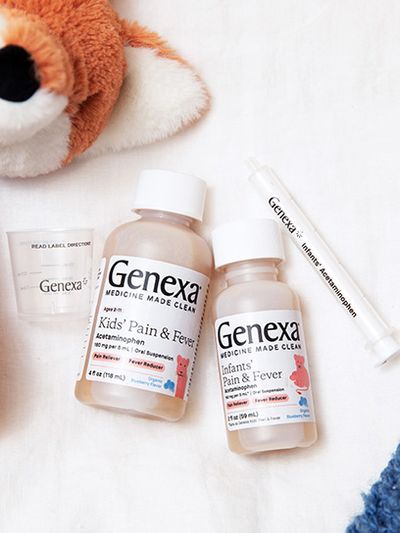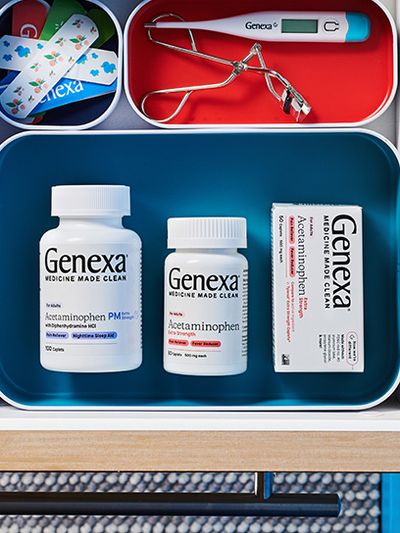How To Treat Chills in Yourself or Your Child
What Causes Chills?
Table of contents:
If you or your child start to experience the chills, the cause could be something as simple as a cold environment or emotional reaction, or it could be the sign of an infection, low blood sugar, or something more serious.
Read on for information about the different causes of chills and how to treat chills in yourself or your child.
What are chills?
Chills is a medical term that is used to refer to a feeling of being cold without an obvious cause, such as low ambient temperature or inadequate clothing.
Chills are commonly associated with illnesses, including a fever. While it may seem strange to think that a high body temperature, as is caused by a fever, would make you feel cold, chills are part of an immune response that the body uses to fight off infection or illness.
When you have the chills, your muscles begin to rapidly expand and contract, causing a feeling of shivering or shaking. The vessels in your skin also become constricted.
While shivering can occur as a genuine response to cold temperatures that direct the body to try and make heat, it can also occur when the body is trying to fight an infection. The body temperature rises during a fever as part of the immune response in an attempt to kill germs that are causing an infection.
Other symptoms you may notice while experiencing chills are goosebumps, which is another sign that your body is trying to create heat.
When you have a fever, your chills may feel constant or may be intermittent. Some people have chills for as long as an hour at a time, while others experience chills off and on for a few minutes a time.
No matter how long your chills last, when accompanied by a fever, the chills are a sign that there is something wrong in your body, such as illness or infection. If you continue to experience chills after treatment, contact your doctor to discuss a possible cause.
Chills and fever should be taken seriously. When left untreated, it is possible to develop severe dehydration and hallucinations in adults and fever-induced seizures in children.
What causes chills?
Chills can occur for a variety of different reasons, some of which are more serious than others. It is normal to get the chills when exposed to a cold environment, but they can also occur as a result of fever.
Chills are commonly associated with the following conditions:
- Infection: When the body fights off infection from bacteria, viruses, or other germs, it may develop chills in order to raise the body temperature to kill off the foreign invader. Chills caused by infection are usually accompanied by fever and body aches.
- Low blood sugar: People with diabetes can experience chills as a result of low blood sugar. While low blood sugar can cause symptoms like chills and shaking when it is not severe, patients should make sure to eat something as soon as possible to prevent the development of more serious symptoms, such as vision problems or seizures.
- Emotional reactions: Chills can occur as a result of a powerful emotional reaction, such as joy, sorrow, or excitement. Many people get the chills while listening to a talented singer or moving music.
- Malaria: Malaria is a serious mosquito-borne illness that is common in tropical regions outside of the United States. If you have recently traveled to a tropical location where malaria is known to occur and you begin to experience nausea, fever, body aches, and sweating along with chills, contact a doctor.
- Inflammatory diseases: Conditions that cause inflammation throughout the body, such as rheumatoid arthritis or lupus, may cause chills and fever to occur.
- Medications: Certain medications are known to cause side effects that include chills or a fever, and the reaction is more common than you might expect. One study found that15 percent of people who reacted poorly to medications experienced chills as a side effect.
- Leukemia: Blood cancers like leukemia and lymphoma are known to cause symptoms like chills, fever, fatigue, and abdominal pain.
If your chills persist, contact a doctor. Your doctor will perform a series of examinations and tests to determine what is causing your chills.
If your doctor suspects an infection may be present, they may perform diagnostic tests, including:
- Blood tests that may require a blood culture in order to detect bacteria or fungi in the blood
- Sputum culture (sample taken from the throat/tonsils) to test for the presence of infection in the lung or bronchi
- Urinalysis to test for the presence of a urinary tract infection
- Chest x-ray to check for the presence of tuberculosis, pneumonia, or other bacterial infection.
Antibiotics may be prescribed if the source of your chills is a bacterial infection. However, antibiotics are not appropriate for the treatment of all types of illnesses, including viral infections like the cold or flu.
How can you treat chills in yourself or your child?
Chills and fever are uncomfortable no matter what your age, but there are several steps you can take in order to provide some relief and comfort for yourself or your child.
Treating Chills in Adults
The strategy for treating chills in adults will vary depending whether or not the chills are accompanied by a fever and how high the accompanying fever is.
Adults with chills and a low fever (temperature of 101.4°F (38.6°C) or less) typically do not need to see a doctor and should rest and drink plenty of fluids.
While it may seem counterintuitive, the best way to make yourself more comfortable is by covering yourself with a light sheet rather than bundling up in heavy clothing or blankets, as this will raise your body temperature.
If you have a fever, you may take a sponge bath or shower with lukewarm or cool water to lower your body temperature; however, avoid cold water, as exposure may cause chills to become worse.
You can also take over the counter medications for the treatment of a fever and chills, including products that contain:
- Acetaminophen
- Aspirin
- Ibuprofen
No matter how badly you are feeling, always take the above medications as directed and do not exceed the recommended dose. Although the medications are available over the counter, their use is not without risk, including potential liver damage associated with use of too much acetaminophen and the possibility of kidney and stomach damage associated with too much ibuprofen and aspirin. Taking aspirin or ibuprofen can help lower your fever and any inflammation you may be experiencing, while acetaminophen can help lower a fever.
If you are experiencing chills as a result of low blood sugar, the American Diabetes Association recommends consuming 15 grams of carbohydrates and testing your blood sugar after 15 minutes, at which point your chills should begin to subside.
Treating Chills in Children
Chills in children should be treated slightly differently than chills in adults depending on the age of the child, their temperature, and any other symptoms that they may be experiencing.
Children with a fever between 100ºF (37.8°C) and 102ºF (38.9°C) who seem uncomfortable and are complaining of chills, aches, or pains can be given acetaminophen in the form of a liquid or chewable tablet.
However, parents should read the dosing instructions carefully and make sure their child is not taking any other products containing acetaminophen, as too much acetaminophen can cause liver damage.
Children with fevers should never be layered with heavy blankets or clothing, as this can cause the body temperature to rise to a dangerous level. Dress feverish children in lightweight clothing and make sure they drink plenty of liquids in order to prevent dehydration.
It is not safe for children under the age of 18 to take aspirin due to the risk of developing a condition called Reye’s syndrome. Although rare, Reye’s syndrome is a serious condition that can occur when children consume aspirin while fighting a viral infection.
When should you call a doctor about chills?
Chills and fever are usually temporary, but they can be the sign of something serious when they persist.
Call your doctor if your fever and chills don’t improve after 48 hours of home care or if you have any of the following symptoms in conjunction with fever and chills:
- Stiff neck
- Severe coughing
- Confusion
- Irritability
- Painful urination
- Forceful vomiting
- Wheezing
- Shortness of breath
- Sluggishness
- Abdominal pain
- Frequent urination or lack of urination
- Unusual sensitivity to bright light
If your child experiences any of the following, make sure to contact their doctor right away:
- A fever in a child younger than three months old
- A fever in a child between the ages of three and six months of age accompanied by lethargy or irritability
- A fever in a child between the ages of 6 and 24 months that lasts longer than 1 day
- A fever in a child between the ages of 2 and 17 that lasts longer than 2 days and doesn’t respond to treatment
Summary
If you or your child are experiencing chills, make sure that you take note of any other symptoms that may occur, such as fever, irritability, or lethargy. People with the chills will feel cold, but they should not be bundled under blankets or heavy clothing, as this may increase the body temperature to an unsafe level.
Contact your doctor if chills persist or if your fever does not come down.





